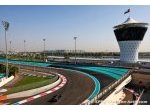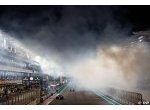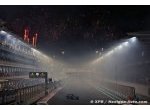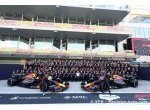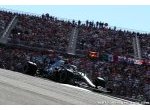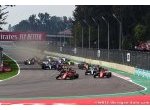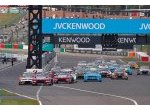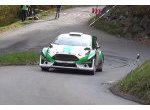WRC is back with a new era!
Summary of regulation changes for 2017
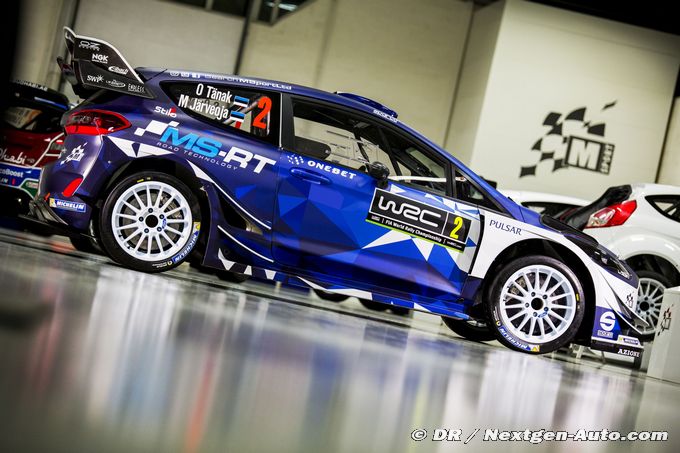
The build-up and fever pitch expectation is almost over as next week’s Rallye Monte-Carlo (19 - 22 January) heralds the start of one of the most keenly-anticipated FIA World Rally Championship seasons in memory.
Dynamic new-look World Rally Cars will echo through the mountains of the French Alps as four of the world’s biggest automotive manufacturers begin the fight for supremacy in motorsport’s toughest championship for production-based cars.
The 13-round series spans four continents in an 11-month global tour, encompassing extreme temperatures that can reach a scorching 35°C in Sardinia and plunge to a bone-chilling -25°C in the harsh Swedish winter.
Much is new for 2017, and WRC Promoter managing director Oliver Ciesla believes the powerful and aggressive cars, developed from a blank sheet of paper to upgraded regulations, will be the stars of the show.
“Our fans are going to love the 2017 WRC! Footage from pre-season testing shows just how exciting these new cars are. A more macho appearance and increased performance will bring smiles to fans’ faces, whether they are watching stage side or on television,” he said.
“There’s a hugely positive feeling throughout the WRC family as we head into the season. The series boasts big names from the automotive industry, and it’s a compliment to the championship’s development that they have chosen to showcase their cars in an environment that offers global visibility from January to November.
“What is so great is the feeling of unpredictability about 2017 because nobody knows which teams, which cars or which drivers will shine. New rules, such as the start order and revised Power Stage points, have been put in place to ensure down-to-the-wire competition and I’m sure we will see many thrilling battles,” he said.
The Teams
Toyota, the world’s biggest selling car manufacturer, returns to the WRC after a 17-year absence. The Japanese giant is joined by multiple champion Citroën, which is back after a year’s sabbatical. Ford, in the guise of the British M-Sport team, and Hyundai, runners-up in both the drivers’ and manufacturers’ series in 2016, complete a stellar line-up.
The Cars
Aggressive, loud and moody – they are the new lightweight World Rally Cars that will battle for tenths of a second on dirt, asphalt, snow and ice.
They are bigger everywhere with larger bumpers at the front and rear and extended door sills which increase the width and provide increased safety. Larger aero devices, and more of them, including a huge spoiler and diffuser at the rear and a front splitter add to the ‘bulldog’ look.
Beneath the bonnet a wider restrictor on the turbocharger increases power from the 1600cc direct injection engine to 380PS. Electronic trickery in the form of an active central differential gives drivers a helping hand in balancing their cars.
The Drivers
The biggest news of the short end-of-year break was the decision of four-time world champion Sébastien Ogier to sign for M-Sport, for whom he will carry #1 on the doors of his Fiesta WRC. The Frenchman is joined by rising star Ott Tänak and Elfyn Evans.
Toyota has opted for an all-Finnish line-up of Jari-Matti Latvala, Juho Hänninen and Esapekka Lappi, while Citroën has chosen the youth of Craig Breen and Stéphane Lefebvre to join lead driver Kris Meeke.
There are no changes at Hyundai which has kept faith with its strong 2016 squad of Thierry Neuville, Hayden Paddon and Dani Sordo.
The Rallies
The championship comprises the same 13 demanding rounds as in 2016, but the order has been given a reshuffle. Corsica moves forward from September to April to provide a better balance of gravel and asphalt rounds. Monte-Carlo opens the season and Australia provides the finale.
Two rallies have changed their structure. Rally Sweden will operate around a central location at Torsby, while ADAC Rallye Deutschland has a new base at Bostalsee in northern Saarland.
Television
The 2017 WRC will generate more TV content than ever. Over 12,000 hours were broadcast globally in 2016 to a cumulative audience of over 700 million people and this season offers even more for fans.
The Sunday lunchtime rally-ending Power Stage programme, now established as a firm fixture across all rounds, will increase from 60 to 90 minutes. It will feature more interviews, extended coverage of the podium ceremony and reaction to the final result from the service park.
Also new for this year is another regular live stage on Saturday afternoons.
Long-term broadcast partners across the globe have renewed rights deals, eager to relay the news and action from one of the most unpredictable seasons for years. A blend of free and pay TV offers exposure to fans in more than 150 countries.
Summary of regulation changes for 2017
Throughout the course of last year, the World Motor Sport Council approved a number of changes to the Sporting Regulations for the 2017 FIA World Rally Championship.
The main amendments are as follows:
Only drivers entered by registered manufacturers are eligible to drive 2017 World Rally Cars, with the approval of the FIA.
A manufacturer may nominate a minimum of two and maximum of three cars for the purpose of scoring points in the Manufacturers’ Championship. Scores from the two best cars in the final classification will amass points in this Championship. Additional cars may be entered by a manufacturer but will not be eligible to score points in the Manufacturers’ Championship.
To provide the opportunity for more drivers to be nominated, a manufacturer will not be required to nominate the first driver in its team. Nominations will however still be required by the closing date of entries for each event.
In the interest of fairness, the start order for World Championship rallies has been amended and is now based purely on performance:
— Day 1: All cars start according to the actual Championship classification
— Day 2: P1 drivers start in the reverse order of the actual rally classification after day 1. Other drivers start in the order of the rally classification
— Day 3: P1 drivers start in the reverse order of the actual rally classification after day 2. Other drivers start in the order of the rally classification.
— P1 drivers re-starting in Rally 2 will start at the end of the P1 group.
The number of additional points available in the Power Stage has been amended to reward the top five fastest drivers and co-drivers. Points will be awarded on a scale of 5, 4, 3, 2, 1.
Manufacturers are no longer required to nominate one tyre supplier for the season. As such, a different brand of tyres could be used event by event or on different cars within one team.
An FIA WRC Trophy has been created for drivers and co-drivers participating in pre-2017 specification World Rally Cars. The maximum number of qualifying rallies is seven and the driver and co-driver who have scored the highest total of points in six of the qualifying rallies will win the titles. If less than five competitors register, no titles will be awarded.
In order to be classified in the final classification at the end of the season, WRC 2 competitors must have taken part in the mandatory rallies in Portugal (19-21 May), Germany (18-20 August) and Great Britain (27-29 October). Except in force majeure, non-participation in any of these three events will result in exclusion from the respective support championship classification and points will not be redistributed.
M-Sport is the supplier of Fiesta R2 cars to the FIA Junior WRC Championship for 2017 and 2018. The six events in the 2017 calendar are the rallies in France, Italy, Poland, Finland, Germany and Spain.
Priority 1 status will be reserved for drivers of World Rally Cars either entered by a registered manufacturer or entered in the FIA WRC Trophy. Priority 2 will continue to be for drivers eligible to score points in the FIA WRC 2 Championship and Priority 3 for those in the WRC 3 and Junior WRC Championship categories.
There is no longer an obligation for organisers to have 25% of the route competitive. The total distance of special stages does however remain at between 300-500 kilometres.
In 2017, each rally organiser must attain the middle level of Environmental Accreditation - Progress Towards Excellence - before the end of the season. From 2018, the top level of accreditation - Achievement of Excellence - must be achieved at least four months before the event is scheduled to run.
In order to allow media activities, the reconnaissance must be finished before 17:00 hrs on the Wednesday. Between 17:00-20:00 hrs is reserved for FIA and team media activities.
The number of permitted chassis per manufacturer has been increased from six to nine and the number of test days from 42 to 55.
Should a rally not be able to run in its entirety, Championship points will be awarded based on the established classification. Full points will be awarded if more than 75% of the scheduled length of special stages has been run, half points if between 50% and 75%, and no points will be awarded if less than 50% is run. Points awarded for the Power Stage, if run, are not subject to this attribution of reduced points.
WRC
Sordo holds on for Sardinia double in dramatic finale
Breaking news: Sordo secures Italian double
Sardinia, saturday: Sordo closes on repeat Sardinia victory
Sardinia, saturday (mid-day): Super Sordo stretches Sardinia lead
More on WRC
